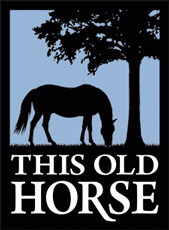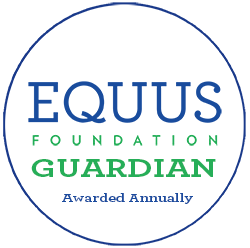EQUINE WELFARE NETWORK PROFILE
This Old Horse, Inc.


This Old Horse, Inc.
19025 Coates Blvd.
Hastings, MN 55033
Mailing Address:
19025 Coates Blvd.
Hastings, MN 55033
Phone: 651-437-1889
MAKE AN INQUIRY
View our WEBSITE
View our GUIDESTAR PROFILE
EIN: 45-4234611Founded: 2012
View our PHOTO GALLERY
Profile Last Updated July 3, 2025Public Charity
NEXT CHAPTERS! Click here to view listings of our adoptable equines: Bandit - Button Bar Wood/Emma - Gideon - Little Johnny - Lizabeth R of Cedar Lane/Lizzie - Maya - Ollie - Romeo - Sophia - Suddenly Irish/Owen - Tara WLF/Baby - Theo - Umbria - Willie

2025
The Guardian Seal of Transparency is awarded annually to recognize an organization's commitment to transparency and accountability by their willingness to make comprehensive data about their programs, horse care practices, and governance available for public scrutiny. The Guardian Seal of Transparency is NOT an endorsement.
Awarded Annually
Last Updated: August 27, 2025
Last Updated: August 27, 2025
Dude
Our Equine Ambassador

Photo @Toni Thomas Photography
Dude is a 31-year old Haflinger who was the first blind horse to come to This Old Horse. He was part of a cart team. His team mate helped him navigate his familiar surroundings after Dude lost his sight to uveitis. His partner died, then Dude's owner. The surviving family members surrendered Dude to us and he taught us what we needed to know about loving and caring for a blind horse. Because of him, we have successfully welcomed and cared more than 40 blind horses to the This Old Horse family. Dude is our ambassador who taught us to 'see' the potential and power of horses who can function perfectly well--if the organization has the vision to make it happen.
MISSION & PROGRAMS
Mission:Our mission is to provide sanctuary and community support to retired, rescued, and recovering horses while they continue to serve as ambassadors to the positive effect of "horse power" in the lives of people.
Our organization provides programs involved with equine rescue, adoption & retirement
Our organization conducts Equine Assisted Services in accordance with the EQUUS Foundation Guidelines on Qualifications of Organizations Conducting Equine Assisted Services (EAS).
Our organization provides outreach and/or public education programs involving horses.
100% of our total programs and services are equine-related.
Our organization is directly responsible for the care and shelter of equines involved in our programs.
Our organization CURRENTLY uses satellite, overflow, foster, and/or outreach facilities which adhere to all the policies, procedures and practices of our organization or did in the previous year. Facility information is provided for the organization's main, satellite and overflow facilities.
Summary of organization's recent accomplishments, goals, strategies to achieve the goals, and capabilities to meet the goals, including its long-term plans to sustain its programs:
Recent Accomplishments
This Old Horse is a nationally accredited, 100% volunteer-powered equine welfare organization based in Minnesota. In the past year, we have provided daily care and support to an average daily census of 185 horses across 10 farm locations, most of whom are retired racehorses, senior horses, broodmares, or horses with special needs. We expanded our Racehorse Reimagined program to formalize lifetime transition pathways for retired Standardbreds and Thoroughbreds and grew our @Liberty program, which uses equine-assisted wellness activities to support women affected by breast cancer. Over 800 horses have benefited from our care since 2012.
Organizational Goals
Our current goals include:
• Expanding capacity to provide lifelong sanctuary and adoptive placement for retired and at-risk equines
• Increasing access to equine-assisted wellness programs for vulnerable human populations
• Advancing public awareness around the value and versatility of retired and unrideable horses
• Ensuring financial sustainability for long-term care of unadoptable residents
Strategies for Achievement
To achieve these goals, we are:
• Growing adoption and ambassador opportunities for horses through racing industry partnerships and retraining programs
• Offering equine-facilitated wellness sessions through structured community partnerships (e.g., @Liberty)
• Engaging donors and sponsors through high-impact community events such as The Polo Classic and Night at the Races
• Maintaining a high-functioning volunteer workforce through leadership development, education, and community-building
Organizational Capacity
This Old Horse is led by a seasoned team with decades of experience in equine aftercare, nonprofit leadership, and community engagement. Our strength lies in our collaborative model, multi-location flexibility, and deep relationships with veterinarians, adoption networks, and racing organizations. We’ve earned national recognition for our lifespan approach to aftercare, ensuring each horse has a safe landing and a purposeful life.
Sustainability Plan
To ensure long-term impact, we are:
• Building an endowment and legacy giving program to secure care for unadoptable horses
• Pursuing diversified funding through grants, individual giving, and corporate partnerships
• Documenting and sharing replicable program models for racehorse aftercare and equine-assisted wellness
• Investing in the professionalization of volunteer leadership to sustain care and community engagement for the next generation
Please describe what steps your organization takes to ensure that:
1) all interactions between your equines and people are mutually beneficial and conducted in accordance with the Guidelines for Human-Equine Interactions stated below;
2) all equines in the care of our organization and/or equines that participate in the organization's program have access to clean drinking water at all times; nutritious food in sufficient quantity, including natural forage such as pasture grass and/or hay; appropriate veterinary, farrier, and dental care; shelter and protection from the weather; sufficient safe space to move around comfortably on a daily basis; and daily opportunity to freely interact and have contact with other equines:
1) Human-Equine Interactions
At This Old Horse, we prioritize equine agency, dignity, and well-being in every human-equine interaction. All interactions are ground-based and choice-driven, with horses participating only when they are willing and comfortable. Our equine-assisted programs, including @Liberty, are structured to foster mutual benefit—supporting human wellness while respecting each horse’s individuality, body language, and consent cues.
We adhere to the Equus Foundation’s Guidelines for Human-Equine Interactions by:
• Allowing horses to opt in or out of interactions
• Using only positive reinforcement, never force or coercion
• Matching participants with horses whose temperament and preferences are aligned with the intended activity
• Training facilitators and volunteers to recognize signs of equine stress or discomfort and respond accordingly
• Ensuring sessions are limited in duration and frequency to prevent fatigue or overexposure
We believe that horses are not tools for therapy—they are partners. This philosophy is embedded in all program design and volunteer training.
2) Equine Care Standards
All equines in our care—whether sanctuary residents, adoptable horses, or program ambassadors—receive the highest standard of daily care, consistent with the Equus Foundation’s guidelines:
• Clean water: Horses have 24/7 access to clean, fresh water. Water sources are monitored daily and heated in winter to prevent freezing.
• Nutritious food: Our nutrition program is forage-based, with free-choice hay available at all times. Individualized feeding plans are designed for each horse by our PhD equine nutritionist. Weight and body condition scores are tracked and reviewed regularly. Changes in appetite and consumption are reported and reviewed.
• Pasture access: Horses live in socially appropriate group environments with continuous access to turnout paddocks or pasture, providing opportunities for grazing, movement, and natural behaviors.
• Shelter: All horses have access to shelter from the elements—either through run-in sheds or barn access—year-round.
• Veterinary, farrier, and dental care: Each horse receives routine veterinary care, including vaccinations, deworming, dental floats, and individualized treatment plans as needed. Farrier services are provided every 6–8 weeks, or more frequently for therapeutic needs.
• Space and socialization: Horses are kept in environments that encourage movement and allow for free interaction with other horses. Our herd management practices prioritize bonded pairings, herd stability, and social enrichment.
Our staff and volunteers are trained to monitor horse behavior and condition daily, and we keep detailed health and care logs for every equine.
At This Old Horse, we are deeply committed to providing an environment where horses not only survive—but thrive—and where human interaction is an honor, not an expectation.
Equine Transition Services:
Overview of our programs involved with rescue, rehabilitation, retraining, re-homing and/or retirement:
1. Foster and adoption of unwanted horses
2. Rehab for horses seized by warrant for neglect and voluntarily surrendered due to hardship.
3. Retirement for performance horses who are injured or age out of careers.
4. Sanctuary for wild Mustangs.
5. Pathway to ownership education programs for new horse owners / adopters
6. Off track retirement and rehoming programs for Minnesota's off track Thoroughbred and Standardbred racehorses.
Equine Assisted Services (EAS):
Our organization provides the following Equine Assisted Services (EAS):
Psychotherapy/Counseling
Academic Learning
Personal Development Learning
3: Total number of Equine Assisted Service Providers at Wishbone Ranch